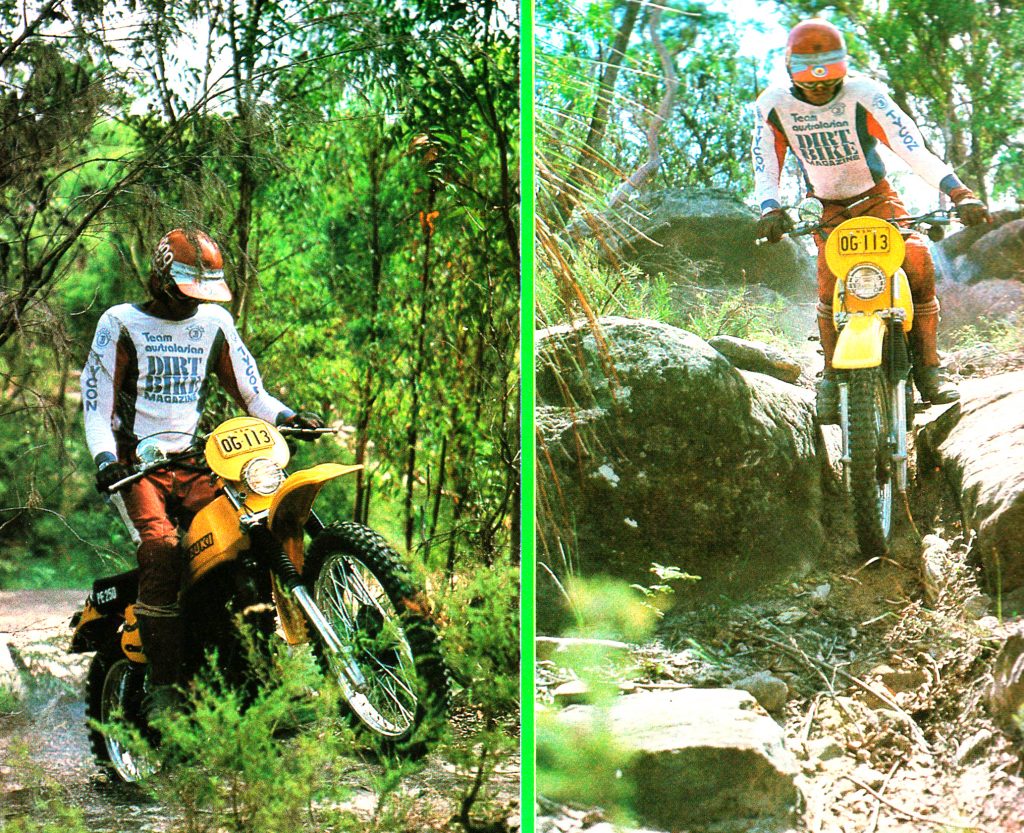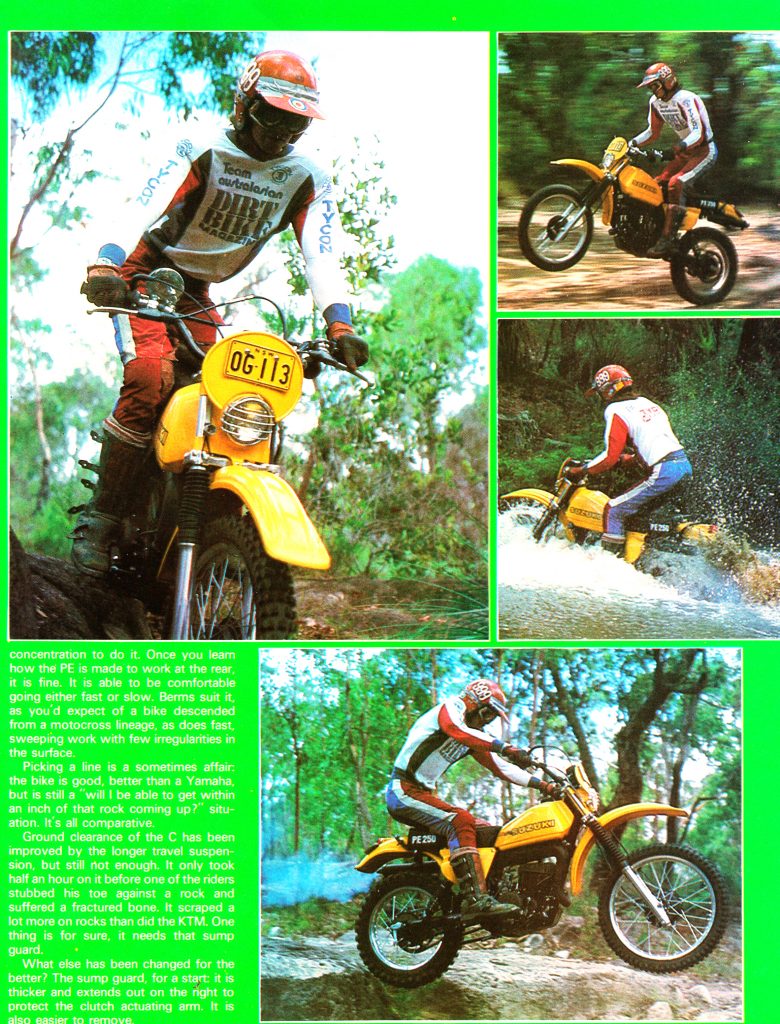ADB Heritage Editor Warren Jack looks back at the Suzuki PE250C test from the July/August 1978 issue of ADB Magazine.
Suzuki first entered the enduro market with the PE250B and it was a good bike but, like all first attempts, it did have a few shortcomings, so the C model was released to a hopeful public expecting them all to be rectified.
The PE first saw the light of day as an adaption of the RM motocrosser, softened for bush work, with a bigger tank and some lights added. The C model had the all-important compliance plate, which the B didn’t, as it came in just before changes in the law. The 12-litre alloy tank had been replaced with a plastic unit holding a little more, a better bashplate was fitted which extended further to the right side protecting the clutch actuating arm, fork travel had been extended to 220mm from the previous 170mm and a centrestand was available as an option. Ground clearance increased due to the longer travel suspension but it was still less than the KTM it was tested alongside.
Other things missing which were thought to define a pukka enduro bike of the day where snailcam chain adjusters, a toolbag and a decent chainguide. Suzuki fitted a spring-loaded chain tensioner which tended to self-destruct if the chain was too taut. The motor, frame and pipe were unchanged, except for a few minor differences, such as the barrel having a different part number due to the addition of noise deadening rubber blocks between the fins. The pipe, too, had been tweaked, as it now had a small dent to clear the new tank mounts.
Different damper rods and springs gave a better ride to the C, particularly when the forks compressed almost to full travel, avoiding the savage jolt of the B. At the rear the wheel tended to fall into holes, rather than float over them, and then get bounced into the air. The answer was to keep the power dialled on to make it work better.
Up front the steering was not the best over rocks or on steep downhills, certainly not up to the standard of rival European bikes, but was an improvement over the previous B model. The front brake worked better on the C, and was more water resistant, while the clutch cable had been re-routed out of the way and the right upper fork leg held a very trick multi tool that is as rare as rocking-horse droppings these days.
The final call from ADB’s test riders was that the PE250C was “an excellent buy for most people and perhaps the perfect trailbike that can be made into a reasonably effective enduro bike, although it does have a few handling quirks”. It was felt that those quirks kept it in the realm of second-best, along with the other Japanese bikes, when compared to the Euro machines. Good but not the perfect rider’s bike.
“It’s easy to own, works well, easy to ride if you only want to go 7/10ths, cheap to buy at around $1500 compared to over $2000 for a KTM and it looks good. Already they are selling like hotcakes.” Heritage Editor Warren Jack
The Basics
WHAT
Suzuki PE250C
WHEN
July/August, 1978
PURPOSE
Enduro
HOW MUCH
$1500 (at time of publication)




